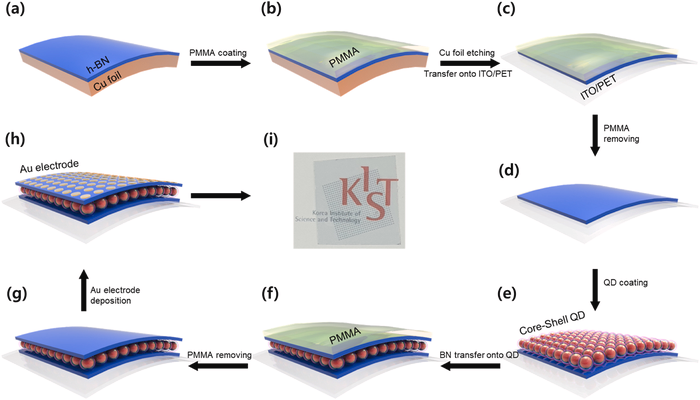| Dec 07, 2021 |
Development of a transparent and flexible ultra-thin memory device
(Nanowerk News) A two-dimensional (2D) nanomaterial-based flexible memory device is a critical element in the next-generation wearable market because it plays a crucial role in data storage, processing, and communication.
|
|
An ultra-thin memory device materialized with a 2D nanomaterial of several nanometers (nm) can significantly increase the memory density, leading to the development of a flexible resistance-variable memory with the implementation of a 2D nanomaterial.
|
|
However, memories using conventional 2D nanomaterials have limitations owing to the weak carrier trapping characteristics of the nanomaterials.
|
|
At the Institute of Advanced Composite Materials, Korea Institute of Science and Technology (KIST, President Yoon, Seok-Jin), a research team led by Dr. Dong-Ick Son announced the development of a transparent and flexible memory device based on a heterogeneous low-dimensional ultra-thin nanostructure (Composites Part B Engineering, "Memory effect of vertically stacked hBN/QDs/hBN structures based on quantum-dot monolayers sandwiched between hexagonal boron nitride layer").
|
 |
| (a-c) hBN transfer to the ITO/PET substrate (d) hBN/ITO/PET substrate; (e) formation of QDs monolayer using a spin-coating technique; (f-g) hBN transfer to the QD/hBN/ITO/PET substrate (h) Au electrode deposition on hBN/QD/hBN/ITO/PET by using a thermal evaporation process; (i) photographs of the device. (Image: Korea Institute of Science and Technology
|
|
To this end, monolayered zero-dimensional (0D) quantum dots were formed and sandwiched between two insulating 2D hexagonal boron nitride (h-BN) ultra-thin nanomaterial structures.
|
|
The research team materialized a device that could become a next-generation memory candidate by introducing 0D quantum dots with excellent quantum limiting properties into the active layer, controlling carriers in 2D nanomaterial.
|
|
Based on this, 0D quantum dots were shaped in a vertically stacked composite structure that was sandwiched between 2D hexagonal h-BN nanomaterials to produce a transparent and flexible device. Therefore, the developed device maintains above 80% transparency and memory function even when bent.
|
|
Dr. Dong-Ick Son stated, "Instead of conductive graphene, by presenting a quantum dot stacking control technology on insulating hexagonal h-BN, we have established the foundation for ultra-thin nanocomposite structure research, and significantly revealed the fabrication and driving principle of next-generation memory devices." He then added, "We plan to systematize the stack control technology for the composition of heterogeneous low-dimensional nanomaterials in the future and expand the scope of its application.“
|

